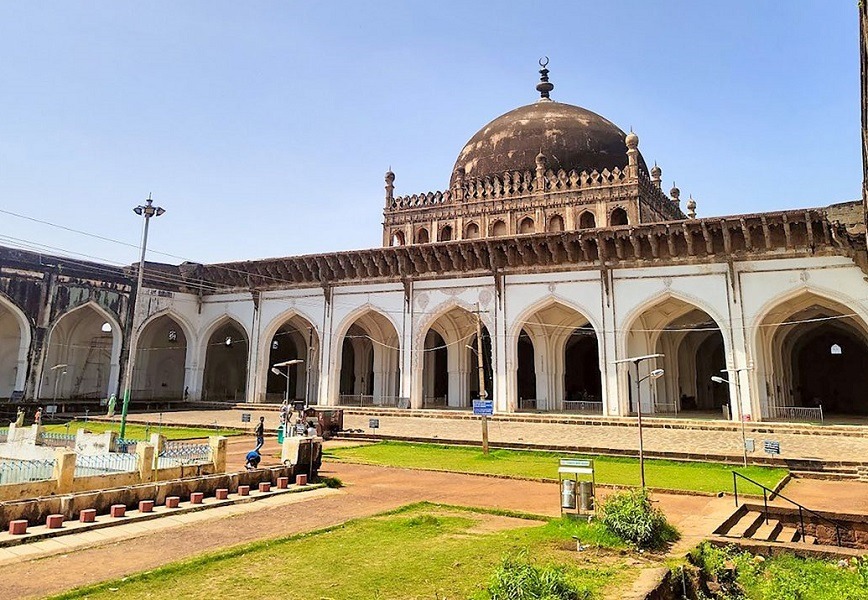Jama Masjid, Bijapur - Timings, History, Architecture, Best Time to Visit
 #5 of 16 Places to Visit in Bijapur
#5 of 16 Places to Visit in Bijapur
 Distance (From Bijapur): 2 Kms
Distance (From Bijapur): 2 Kms
 Trip Duration (Including Travel): 30 Mins - 1 Hr
Trip Duration (Including Travel): 30 Mins - 1 Hr
 Transportation Options: Cab / Auto
Transportation Options: Cab / Auto
 Travel Tips: None
Travel Tips: None
At a distance of 2 km from Bijapur Railway Station, the Jama Masjid is a congregational mosque in the Bijapur city of Karnataka, India. It is one of the must include places in Bijapur leisure packages.
Jama Masjid also referred to as Jamiya Masjid or Jumma Masjid, was commissioned by Ali Adil Shah I of the Bijapur Sultanate in 1576 CE. The primary reason behind its establishment was to celebrate the Sultan's victory against the Vijayanagara Empire during the Battle of Talikota and the mosque was financed with money looted from the battle. Although the construction was never fully completed, it became the main mosque of Bijapur, succeeding an earlier, smaller congregational mosque erected by Ibrahim Adil Shah I. In 2014, UNESCO included the mosque on its tentative list for potential designation as a World Heritage Site, under the title 'Monuments and Forts of the Deccan Sultanate'.
Spanning an area of 54,250 square feet, Jama Masjid is the largest mosque in Bijapur, accommodating up to 4,000 worshippers. It is regarded as one of the most exemplary representations of Adil Shahi architecture. The primary entrance is located on the eastern side, although the northern entrance is utilized more frequently. The mosque's layout consists of a large rectangular structure measuring 492 by 262 feet, featuring a square courtyard of 164 feet. A pathway from the eastern entrance leads into the courtyard, which is adorned with fountains and a central ablution reservoir.
The main prayer hall is positioned at the western end of the complex, crowned with a hemispherical dome that features a crescent-moon finial and is encircled by a balustrade at its base. The dome has a diameter of 57 feet and rises to a height of 120 feet. The facade of the prayer hall is characterized by seven arched openings, with only the central arch being elaborately decorated. By 1686, the mosque was largely finished only the two minarets intended for the eastern facade were left unfinished.
The mosque's interior is characterized by its elegant, clean lines and a scarcity of decorative features. The prayer hall is expansive, measuring 230 by 118 feet, and is organized into five bays that run parallel to the qibla wall. Massive square piers provide support for the roof, while a series of arches descend to the floor, creating a gothic ambiance within the prayer hall. The central bay is a square area of 82 feet, with its floor divided into 2,250 rectangular sections that mimic the appearance of a prayer mat, a modification introduced later by Aurangzeb.
The simplicity and starkness of the interior are contrasted by the elaborate mural decorations that encircle the central mihrab on the qibla wall. This mihrab, adorned in gold and hues of blue and black, showcases a variety of imagery, prominently featuring Quranic inscriptions. It is likely that this ornamentation was added later during the reign of Muhammad Adil Shah, as indicated by some Persian inscriptions located near the mihrab.
Timings: 9 AM - 6 PM
Entry: Free















